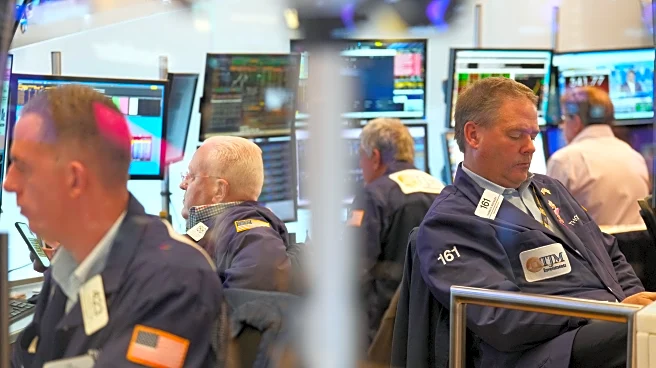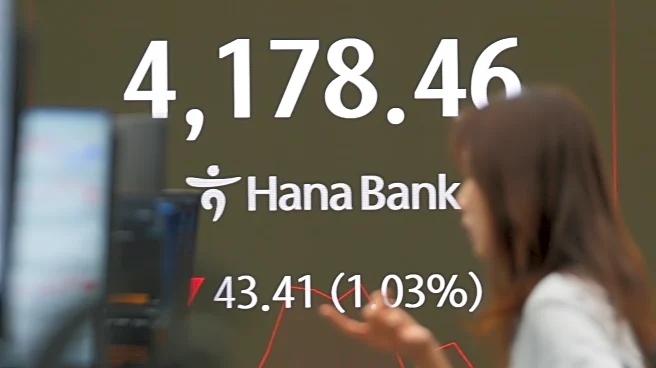What's Happening?
Wall Street chief executives have expressed concerns about the current high valuations in the equity market, suggesting that investors should prepare for a potential market correction of more than 10%
within the next 12 to 24 months. During a financial summit organized by the Hong Kong Monetary Authority, Mike Gitlin, CEO of Capital Group, highlighted the challenges posed by current valuations despite strong corporate earnings. His views were supported by Morgan Stanley CEO Ted Pick and Goldman Sachs CEO David Solomon, who also foresee a significant selloff as part of normal market cycles. The S&P 500 index is currently trading at 23 times forward earnings estimates, surpassing its five-year average of 20 times, while the Nasdaq 100 Index is at a multiple of 28 times, compared to nearly 19 times in 2022. Concerns have been exacerbated by the tech-heavy gauge's futures dropping as much as 1.8% and Palantir Technologies Inc. declining over 7% in pre-market trading due to worries about its valuation.
Why It's Important?
The potential market correction highlighted by Wall Street CEOs could have significant implications for investors and the broader economy. High valuations have been a point of concern, especially as global equities continue to reach new highs despite a slowing U.S. economy and government shutdown. A correction could lead to increased market volatility and impact investor sentiment, potentially affecting investment strategies and financial planning. The focus on company earnings in 2026 suggests that stronger firms may outperform, while weaker ones could lag, leading to greater dispersion in market performance. This scenario underscores the importance of careful risk management and strategic investment decisions in the face of potential market fluctuations.
What's Next?
As the market anticipates a possible correction, investors and financial institutions may need to reassess their strategies to mitigate risks associated with high valuations. The emphasis on company earnings in 2026 indicates a shift towards evaluating individual firm performance, which could influence investment decisions. Additionally, geopolitical uncertainties and policy error risks in the U.S. may further impact market dynamics. Stakeholders will likely monitor these developments closely, adjusting their approaches to navigate potential challenges and capitalize on opportunities in the evolving financial landscape.
Beyond the Headlines
The discussion around market corrections and valuations also raises questions about the sustainability of current market trends and the role of systemic risk. The potential for drawdowns not driven by macro-cliff effects could be seen as a healthy development, encouraging a more balanced and resilient market environment. This perspective may prompt a reevaluation of investment philosophies and the importance of diversification in managing long-term financial health.













